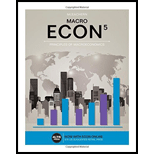5.[单选题] The imports and exports counted based on the standard of goods passing through customs are called () A.Entrepot Trade B.General trade C.Transit trade D.Specialized trade 6.[单选题] The Ricardian model attributes the gains from trade associated with the principle of comparative advantage result to A.differences in technology. B.differences in preferences. C.differences in labor productivity. D.differences in resources. E.gravity relationships among countries. 7.[单选题 If a production possibilities frontier is bowed out (concave to the origin), then production occurs under conditions of A.constant opportunity costs. B.increasing opportunity costs. C.decreasing opportunity costs. D.infinite opportunity costs. E.uncertain opportunity costs. 8.[填空题] Use the information in the table below to answer the following questions. Production per unit of Labor: U.S. Argentina Wheat 200 20 Вeef 100 80 (a) the opportunity cost of wheat in US is units of beef, in Argentina is units of beef . (b) the opportunity cost of beef in US is units of wheat, in Argentina is units of wheat. (c) an absolute advantage in the production of wheat. advantage in the production of beef. an absolute (d) an comparative advantage in the production of wheat. comparative advantage in the production of an beef.
5.[单选题] The imports and exports counted based on the standard of goods passing through customs are called () A.Entrepot Trade B.General trade C.Transit trade D.Specialized trade 6.[单选题] The Ricardian model attributes the gains from trade associated with the principle of comparative advantage result to A.differences in technology. B.differences in preferences. C.differences in labor productivity. D.differences in resources. E.gravity relationships among countries. 7.[单选题 If a production possibilities frontier is bowed out (concave to the origin), then production occurs under conditions of A.constant opportunity costs. B.increasing opportunity costs. C.decreasing opportunity costs. D.infinite opportunity costs. E.uncertain opportunity costs. 8.[填空题] Use the information in the table below to answer the following questions. Production per unit of Labor: U.S. Argentina Wheat 200 20 Вeef 100 80 (a) the opportunity cost of wheat in US is units of beef, in Argentina is units of beef . (b) the opportunity cost of beef in US is units of wheat, in Argentina is units of wheat. (c) an absolute advantage in the production of wheat. advantage in the production of beef. an absolute (d) an comparative advantage in the production of wheat. comparative advantage in the production of an beef.
Chapter5: Introduction To Macroeconomics
Section: Chapter Questions
Problem 1.1P
Related questions
Question
Practice Pack
!NO NEED FOR EXPLANATIONS!
Answer the questions 6,7,8...
Thank you.
![5.[单选题]
The imports and exports counted based on the
standard of goods passing through customs are
called ()
A.Entrepot Trade
B.General trade
C. Transit trade
D.Specialized trade
6.[单选题]
The Ricardian model attributes the gains from
trade associated with the principle of
comparative advantage result to
A.differences in technology.
B.differences in preferences.
C.differences in labor productivity.
D.differences in resources.
E.gravity relationships among countries.
7.[单选题
If a production possibilities frontier is bowed out
(concave to the origin), then production occurs
under conditions of
A.constant opportunity costs.
B.increasing opportunity costs.
C.decreasing opportunity costs.
D.infinite opportunity costs.
E.uncertain opportunity costs.
8.[填空题]
Use the information in the table below to answer
the following questions.
Production per unit of Labor:
U.S.
Argentina
Wheat
200
20
Beef
100
80
(a) the opportunity cost of wheat in US is
units of beef, in Argentina is
units of
beef .
(b) the opportunity cost of beef in US is
units of wheat, in Argentina is
units of
wheat.
(c)
an absolute advantage in the
production of wheat.
advantage in the production of beef.
an absolute
(d)
an comparative advantage in the
production of wheat.
comparative advantage in the production of
beef.
an](/v2/_next/image?url=https%3A%2F%2Fcontent.bartleby.com%2Fqna-images%2Fquestion%2Fd96911c0-14f6-4c69-bcd4-ae73aa3a6a8f%2Fa959b8a6-788b-452e-aecd-c6aa8e18c0a4%2F0cn1mz_processed.jpeg&w=3840&q=75)
Transcribed Image Text:5.[单选题]
The imports and exports counted based on the
standard of goods passing through customs are
called ()
A.Entrepot Trade
B.General trade
C. Transit trade
D.Specialized trade
6.[单选题]
The Ricardian model attributes the gains from
trade associated with the principle of
comparative advantage result to
A.differences in technology.
B.differences in preferences.
C.differences in labor productivity.
D.differences in resources.
E.gravity relationships among countries.
7.[单选题
If a production possibilities frontier is bowed out
(concave to the origin), then production occurs
under conditions of
A.constant opportunity costs.
B.increasing opportunity costs.
C.decreasing opportunity costs.
D.infinite opportunity costs.
E.uncertain opportunity costs.
8.[填空题]
Use the information in the table below to answer
the following questions.
Production per unit of Labor:
U.S.
Argentina
Wheat
200
20
Beef
100
80
(a) the opportunity cost of wheat in US is
units of beef, in Argentina is
units of
beef .
(b) the opportunity cost of beef in US is
units of wheat, in Argentina is
units of
wheat.
(c)
an absolute advantage in the
production of wheat.
advantage in the production of beef.
an absolute
(d)
an comparative advantage in the
production of wheat.
comparative advantage in the production of
beef.
an
Expert Solution
This question has been solved!
Explore an expertly crafted, step-by-step solution for a thorough understanding of key concepts.
Includes step-by-step video
Learn your way
Includes step-by-step video
Step by step
Solved in 2 steps

Knowledge Booster
Learn more about
Need a deep-dive on the concept behind this application? Look no further. Learn more about this topic, economics and related others by exploring similar questions and additional content below.Recommended textbooks for you


Principles of Economics 2e
Economics
ISBN:
9781947172364
Author:
Steven A. Greenlaw; David Shapiro
Publisher:
OpenStax



Principles of Economics 2e
Economics
ISBN:
9781947172364
Author:
Steven A. Greenlaw; David Shapiro
Publisher:
OpenStax


Principles of Microeconomics
Economics
ISBN:
9781305156050
Author:
N. Gregory Mankiw
Publisher:
Cengage Learning

Essentials of Economics (MindTap Course List)
Economics
ISBN:
9781337091992
Author:
N. Gregory Mankiw
Publisher:
Cengage Learning

Principles of Macroeconomics (MindTap Course List)
Economics
ISBN:
9781285165912
Author:
N. Gregory Mankiw
Publisher:
Cengage Learning